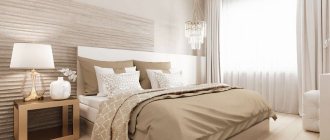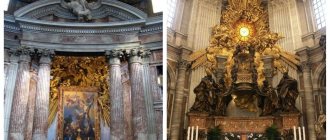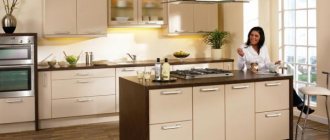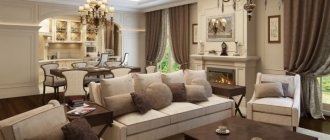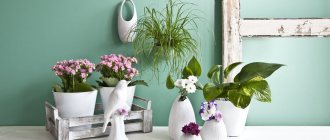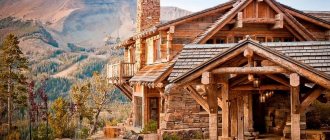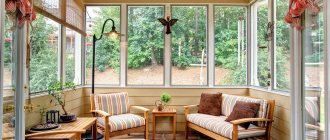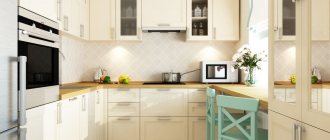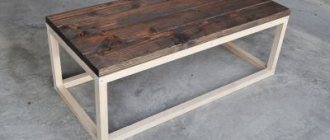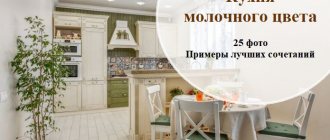Baroque as a style in the interior appeared in the 17th century in Italy, but its elements still find their admirers. If you are one of them, make yourself comfortable, we have something to share.
Two works by Giovanni Lorenzo Bernini. On the left is the Church of Sant'Andrea al Quirinale, opened in 1670 in Rome. On the right is the Chair of St. Peter in St. Peter's Basilica in the Vatican, opened in 1666
The history of the Baroque style
The concept of baroque was introduced into use in 1850 to designate a style that was formed during the reign of Louis XIV in France and Peter I in Russia. This is a palace style that shaped the magnificent appearance of famous monumental architectural ensembles - Versailles, Peterhof, Schönbrunn. The march of this style around the world began in Western Europe. The scattered German principalities, Italian and French cities were the first to see the luxury and splendor of Baroque buildings and interiors.
The style entered Russia a little later. Only at the end of the 17th century did Golitsyn and Naryshkin decorate their residences in the European style, and then the style reached St. Petersburg. The style of buildings erected at that time was named after the ruler (owner of the property). There are still such concepts as Golitsyn or Peter the Great baroque.
Baroque architectural forms are oval, rectangle, square, circle. A symmetrical, correctly built room with right angles and circles is characteristic of Baroque interiors. Historical interiors in the Baroque style were decorated with colonnades, flights of stairs with marble balusters, portals with paintings and sculptures.
In the 18th century, the Baroque style in the interior became even more pompous, and the symmetry and color saturation of the furnishings were lost. The rooms began to be decorated in a more feminine, openwork manner. There was even more gilding and curls in the interiors. Thus, Baroque gradually transformed into Rococo. However, unlike Baroque, it was used only to create interiors. No buildings were built in the Rococo style.
History of origin
It appeared towards the end of the 17th century, first in Rome, and later took root in Venice and Florence, after which it conquered all of Europe. The Baroque style in the interior came into fashion under Louis XIV, the peak of its popularity was the 18th century, and now there are also a considerable number of adherents of this trend.
The premises, decorated in the Baroque spirit, are reminiscent of royal palaces, replete with expensive ornate decoration, everything here is large-scale, intricate, even deliberately flashy. Initially, the unusualness and whimsicality of this trend were put at the service of noble persons and high-ranking ministers of the church in order to emphasize their wealth and power. Therefore, any element of furniture or decor pathetically declared the wealth of the owner.
The beginning of the Baroque era was the end of traditionalism and adherence to the classics. In the interior, as in all other areas, lush and extraordinary forms, dynamism, and contrasting color schemes are welcomed.
Basic principles
1. Baroque style in the interior requires a large space. A spacious room with high ceilings can be decorated with columns and statues. The high ceiling can be decorated with monumental paintings, stucco rosettes and monograms. The apartment has an area of 80 sq. m. the Baroque style cannot be recreated.
2. The color scheme of baroque rooms is rich. Burgundy, deep blue, muted green, brown and terracotta colors are actively used. The most recognizable combination is white and gold.
3. To decorate the walls, choose wallpaper with the effect of silk-screen printing, embossing, or a pattern with monograms. They are combined with smooth plaster, decorated with gilded stucco, moldings, marble and mirror inserts, and frescoes.
4. The ceiling is a natural continuation of the walls, the decorations of which smoothly transition to the surface of the ceiling. The ceiling is decorated with paintings, stucco, and frescoes. Luxurious chandeliers with crystal pendants complete the elegant and majestic look.
5. The floors fit harmoniously into the overall atmosphere of the room. They are decorated in the same style as the walls and interior items. For finishing use parquet, laminate with a natural wood pattern, marble or ceramic tiles imitating marble and granite. The floors are covered with warm carpets with a dense texture.
6. Furniture creates the appearance of the entire room. Each piece of furniture is a skillfully crafted piece with a unique design. It is decorated with artistic carvings, mosaics, beautiful patterned textiles, and gilding.
7. As Baroque decor, it accepts recognized objects of art - paintings by famous artists of the 17th - 18th centuries, sculptures of cherubs, naked girls and boys, handmade tapestries. No Baroque interior is complete without a large mirror in a chic gilded frame with scrolls and monograms.
8. Baroque curtains are recognizable - they are lush, a little theatrical, and expensive. When decorating a modern interior in the Louis XV style, it is appropriate to decorate the windows with lambrequins, Austrian curtains, and heavy double curtains with tiebacks.
Baroque trifles
With all this, low ceiling chandeliers, with simulated candlesticks or crystal threads, fit harmoniously. Porcelain figurines fit very succinctly in cabinets, on fireplaces, and shelves.
In addition, you can purchase an antique set for several people made of porcelain and other modern materials. But it must be painted and have carved edges, handles, borders, etc.
Many small accessories that can also carry echoes of style: combs with elegant carved handles, brooches, hairpins, cigarette cases, boxes for Havana cigars, vases, busts, wall lanterns.
Baroque is characterized by the use of only expensive, high-quality finishing materials. Designers do not accept artificial leather, plastic, plywood - low-grade techniques.
In the interior of an apartment, style techniques can be used in the bedroom, hallway, halls, and kitchen. Any corner will contain some accessory from the era of Louis, and you will plunge into the rich luxury of Italy, which, by creating the Baroque, tried to prove its greatness to the Protestant world.
Color spectrum
The recognizable combination of Baroque colors is white and gold. It emphasizes the splendor of the interior and its status. White is replaced with pastel colors. It can be beige, peach, sand.
For modern interiors, it is acceptable to use dark royal colors - velvet blue and burgundy, chocolate brown and muted green.
Baroque in the interior is emphasized by a combination of contrasting colors. For example, white and brown. They are used to decorate walls and ceilings. At the same time, the surfaces are decorated with gilded stucco, unifying the space.
The abundant use of ornate patterns, including various curls and flowers, is an integral part of the Baroque interior. Patterns decorate the walls, furniture, floors, ceilings, mirror frames, and dishes.
Classicism style
Consider the ornament of Baroque and Classicism. What is the difference? From the end of the 17th century. The era of classicism is coming. The appearance of the style was significantly influenced by the excavations of Pompeii and Herculaneum. Once again, ancient art is becoming a source of inspiration. However, classicism also adds a new vision of the world.
The ornament acquires balance with clear and precise straight lines, squares, ovals and rectangles.
Many elements that are characteristic of Baroque and Rococo are preserved, but excesses and overload with details are eliminated.
Many figurative compositions are exquisite and full of harmony. Favorite motifs include: sphinxes, baskets of flowers, lion's head, dolphins, etc.
The ornament of classicism attracts with its simple and graceful lines, which is manifested in its similarity with Greek art.
Baroque ornament, solemn and dynamic, left its mark on subsequent styles with its unique compositions.
Wall decoration
Every meter of walls is decorated with special chic, filling the space with frescoes, niches, marble inserts, columns, monumental paintings and gilded stucco moldings. The main task of the style is to capture the imagination of the guest, delight him, and make him freeze in place. In no case should the wall be made monochromatic, covered with one type of material. Several expensive materials are selected for it, combined and decorated with additional decor.
To replicate the interior of palace premises in modern houses, designers use the principle of dividing the wall into zones. Each zone is decorated in a special way. It is important that the wall and the ceiling create the impression of a single space, decorated according to the same principle.
Several wall decoration techniques
1. The smoothly plastered surface is covered with a layer of white or light beige matte paint. A molded cornice is glued along the perimeter of the upper part. The wall surface is decorated with stucco moldings and large mirrors in gilded frames.
2. To decorate the wall, use two contrasting colors and gilding. There is gilded stucco along the perimeter of the walls, and the height of the ceilings is emphasized by marble columns with elegant carved capitals. Large mirrors are mounted on the wall, in the places designated by moldings. They reflect the splendor of the room.
3. Apply the “white on white” principle. For this, choose expensive wallpaper with silk-screen printing or embossing. They are used to decorate squares or rectangles on the wall, enclosed in gilded stucco frames. The wall around them is painted with white matte paint. All molded parts of the ceiling and walls are painted with gold acrylic paint. The portals are decorated with white sculptures in theatrical poses.
4. The richness and splendor of the room are perfectly emphasized by inserts of marble, tapestries, and brocade.
Living room in Baroque style
A true baroque living room is a real palace chic, a kind of salon for aristocrats, where there is a place for a luxurious relaxation area, and a corner for intimate conversation, and a small library where you can read your favorite book, sitting in a soft and cozy chair. But what definitely has no place here is television, as well as any other achievement of technical thought.
The laptop on the table looks like a foreign object in a baroque interior
Particular attention in the design of the living room is paid to the color scheme: pastel shades, a lot of gilding, or deep rich colors - wine, blue, ruby, which are combined with gold m or silver symbolize wealth and luxury. Liquid or textile wallpaper is suitable for walls. Exquisite stucco molding, cornices and moldings will add monumentality to the interior. A baroque living room requires the installation of full-length sculptures, false columns and decorated niches in the walls.
The fireplace is the central place for the relaxation area in the baroque living room
To visually increase the height of the living room, they use a design technique such as a multi-level ceiling with LED lighting along the contour. A luxurious carpet with floral patterns is laid on the floor, which occupies most of the room.
The plant ornament looks good against the backdrop of solid redwood
The living room will be decorated with massive furniture with carved elements - a soft corner with leather or velvet upholstery, a couch, a small table, several ottomans. Furniture is placed symmetrically closer to the center of the room, and not close to the walls. Each element of the living room interior should complement each other: a chaotic pile-up of various items is not typical for baroque. If you ignore this rule, the living room will resemble a warehouse for expensive things.
Golden monograms against the background of milky white walls look especially elegant
Ceiling decoration
The Baroque style in the interior is emphasized by high painted ceilings. They can be spherical, vaulted or straight.
For ceilings, the characteristic features are:
- ostentatious luxury and rich decoration;
- ornate stucco decoration extending from the walls to the ceiling;
- the use of stucco rosettes and orders as chandelier decorations;
- circles and ovals with gilded details and inscribed frescoes;
- monumental painting and fresco with distant perspective.
Rococo ornament
What do Baroque and Rococo ornaments have in common? The Rococo style is a late stage in the development of Baroque, which always strived for greater freedom and simplicity of compositions.
Its name comes from the French "rocaille", which means rock. In the 17th century fountains began to be decorated in the form of fragments of stone blocks, which were covered with plants intertwined in a chaotic manner. This was the beginning of the development of a style whose main property was asymmetry.
In Rococo one can feel admiration for the art of China, India and Persia, so among the ornaments you can see palm trees, figures of monkeys and dragons. The style is also characterized by a love for nature, but not for its natural beauty, but for its artificial one.
As before, ancient mythology becomes the source of inspiration. The main figure becomes Venus and everyone connected with her in the plot. These are nymphs, cupids.
Thus, in the interweaving of these elements, a new style was born, distinguished by elegance and grace.
Floor decoration
Marble, granite, varnished boards, and artistic parquet were used for flooring in historical interiors. The floor complemented the overall picture of splendor and luxury, but did not draw attention to itself. The floors in living rooms and bedrooms were often covered with thick Persian carpets with designs and patterns.
Today, laminate, parquet boards, and marble tiles are used for floor finishing. An important condition remains the combination with the wall decoration and the overall concept of the room. The floor should complement the overall look of the room. Today, patterned carpets are replaced with plain ones or suitable analogues with bright patterns are selected.
How to decorate different rooms?
Each of the rooms in the home can be decorated in a baroque style.
Dining room
It is recommended to install the most beautiful sets in the kitchen and dining areas of an apartment or house. The use of painted furniture (with the inclusion of openwork details) is also recommended. For upholstery, use silk or velvet fabric, preferably with a pattern. To create the most sophisticated interior possible, it is advisable to decorate the space with stone.
Cushions on sofas must be embroidered by hand.
living room
The design of even a small guest room involves the use of large fireplaces with custom finishes and selected textiles. The use of valuable wood is encouraged. Tones are selected with the expectation of emphasizing the depth of space and creating contrast. Experts advise giving preference to burgundy, green, black and white colors. When renovating, walls, door and window frames are often inlaid; you can also use plaster with stucco inclusions and imitate columns.
Baroque furniture
Such a concept as a furniture set appears precisely in the Baroque era. A sofa with a curved back and silk upholstery was paired with the same armchairs. They repeated the shape, materials, textile design. Baroque furniture was made by hand by renowned craftsmen.
It is characterized by the following symptoms:
- wood carving with gilding;
- high curved backs with a carved surface;
- inlay with valuable types of wood and stone;
- painting;
- beautiful gilded fittings;
- upholstery in silk and smooth velvet;
- decorative pillows with hand embroidery.
Large dining tables with signature chairs truly brightened up the dining rooms. Twisted gilded legs, massive tabletops with mosaics and artistic carvings were complemented by inlay with valuable wood. Luxurious Baroque beds were decorated with canopies; elevated, lifted to the podium.
To create an interior from the time of Louis XV, modern living rooms are furnished with cozy armchairs and luxurious sofas. They, just like their historical counterparts, have curved legs, high backs, and are decorated with artistic carvings, gilding and mosaics. The spacious living room can accommodate several sofas at the same time, forming relaxation areas. The amount of upholstered furniture depends on the size of the room.
Examples of furniture made in the Baroque style:
The choice of furniture and its features
To make furniture, choose a type of wood that can be polished and decorated with carvings, for example, walnut. For decoration, ivory, tortoise shell, gilding, and bronze are used.
The Baroque interior is distinguished by high-quality fabric upholstery, fringe, curved lines, and high legs. The sofa is complemented by paired armchairs, the table is decorated with carvings or mosaics, and chairs must have carved backs. The bed is of a large size, a two-door wardrobe, a sideboard and ottomans near the armchairs.
The photo shows furniture for the Baroque style, which is distinguished by its uniqueness, long twisted legs and gold fittings.
Decorative items used
Forming the appearance of a historical style in the interior, the room is decorated with the following decorative items:
- painted porcelain dishes;
- sculptures and figurines in expressive poses;
- porcelain floor vases;
- reproductions of paintings by Caravaggio and Rubens;
- tapestries and frescoes;
- mirrors in carved frames.
An important role in decorating a baroque room is played by the design of the walls and ceiling. The use of stucco elements, gilded elements, and wall paintings creates a royal style in the interior.
Baroque decor items:
How to distinguish Baroque from Renaissance
Baroque architecture is characterized primarily by rich sculptural surfaces. While Renaissance architects favored planar classicism (flat surfaces decorated with classical elements), Baroque architects freely shaped surfaces, achieving three-dimensional sculptural classicism.
While the surface of a Renaissance building is usually neatly divided into sections (according to classical clarity and order), the Baroque surface is treated as one continuous whole.
A Renaissance facade often consists of many similar parts, so that the eye does not stop at any particular part of the building. A Baroque façade often includes a rich, spectacular concentration of elements around a central entrance. For example, curved walls, columns, blind arches, statues, relief sculpture.
Textile
Baroque in the interior is formed by an abundance of plain and patterned textiles. For furniture upholstery, bedspreads, curtains, and tablecloths, choose satin, silk, brocade, and smooth velvet. Fabric connects furniture and interior items to each other, creating harmony and unity. Usually, one type of fabric is chosen for the upholstery of sofas, armchairs and chairs. Curtains are matched to match the carpet or wallpaper fragments.
Baroque curtains are a theater curtain. With cascading waves, draperies, and an abundance of fabric.
When choosing textiles for window decoration, they give preference to the following types of curtains:
- multilayer with tiebacks;
- Austrian with theatrical drapery;
- lambrequins with ties, frills, swags.
Textiles are decorated with tiebacks, gold embroidery, tassels, bows, and brooches. The bedroom creates the image of a royal boudoir with the help of luxurious textile decoration. The quilted satin bedspread covering the bed is complemented by decorative pillows with a frilly edge. A natural carpet with a pattern is laid on the floor. The corner for reading and drinking tea is furnished with a soft armchair and a silk upholstery.
Lighting
Bronze chandeliers with crystal pendants gave respectability and majesty to Baroque interiors. At first, chandeliers served as the basis for candles, the light of which was greatly enhanced by multifaceted crystal pendants in the shape of an oak leaf and a drop. Candles were inserted into candelabra, girandoles, and candlesticks. Today, baroque chandeliers do not have to be decorated with real candles; it is enough to choose light bulbs of the appropriate shape.
To properly illuminate a large room, lighting is formed according to zones and height principle. There are lamps and floor lamps placed in the area for relaxation, reading, and playing music. In rooms with high ceilings or flights of stairs, the central large chandelier is complemented by sconces, lamps and floor lamps located below.
For a spacious hall, select several large chandeliers with 12 or more arms made of bronze or bronze and gold. They are placed evenly over the ceiling area and decorated with rosettes and stucco molding.
Examples of lighting fixtures made in the Baroque style:
Today, baroque interiors are back in fashion. With their help, you can emphasize the status and wealth of the owners. When decorating a house, subtle taste and adherence to historically established baroque traditions are required so as not to disturb the feeling of harmony and elegant luxury.
Ornamental motifs
What are Baroque ornaments and patterns? In addition to classical acanthus, the ornament consists of cartouches, shells, floor lamps and flower vases. There are many garlands, arabesques, cornucopias and musical instruments, which are lavishly framed and arranged symmetrically.
On Baroque ornaments you can see the following pictures: outlandish flowers of unusual shape, branches and leaves of plants, sheaves with ears of corn and many other designs. They then began to be placed on fabrics.
Photo ideas for interior design in the Baroque style
If you notice an error, video or link that doesn't work, please select a piece of text and click Ctrl+Enter.
0

